Let's start our article by determining which pipes are located in the kitchen.
- Gas;
- Tap cold water;
- Tap hot water;
- Sewer;
- Heating.
As you can see, there are a lot of pipes for this small room. Therefore, the question of how to close pipes in the kitchen or how to hide them is relevant.
Types of pipe decoration methods
To begin with, there are several basic methods regarding the pipes through which water passes. Some of the methods have nothing to do with the gas pipe. It’s just that these methods of concealment do not allow their use in accordance with the current norms and rules for the operation of a household gas pipeline.
Hidden wiring
This is one of the most common methods used nowadays. To do this, grooves are made along the wall or floor from the riser to the sink.
This process is labor-intensive, requiring a good hammer drill and the skills to use it. It is in the grooves that pipes (water supply and sewer) are laid, where they are walled up with plaster or putty mortar.
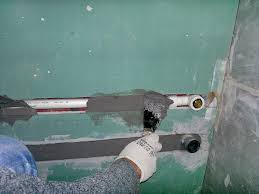
How to sew pipes in the kitchen into grooves - a clear example
Here you must strictly adhere to three basic rules:
- Water pipes must be installed on top of the sewer pipe.
- The water pipe with hot water should always be located to the right of the pipe with cold water, if they are mounted in the same horizontal plane.
- The sewer pipe is laid with slight slope(gravity sewer) towards the riser. The slope angle for pipes with a diameter of 32-50 millimeters is two millimeters per one linear meter length of the sewer pipeline. And three millimeters if pipes with a diameter of 80-100 millimeters are installed.
And now to the question of how to close the pipes in the kitchen if it is not possible to install hidden wiring. The best option- this is to make a box from plasterboard sheets. In principle, you can use another sheet material(chipboard, plywood, plastic, etc.), but it’s easier to work with plasterboard, and it’s also cheaper.

To construct a horizontal box, metal profiles and drywall itself are required. Usually the pipes run near the wall, so the frame is attached to the wall and floor, which creates a fairly rigid and reliable structure.
To do this, a guide profile is installed horizontally on the wall ten centimeters above the pipes and secured with self-tapping screws. Its length is determined by the length of the pipes.
Exactly the same profile of the same length at the same distance from the pipes is installed and attached to the floor. Now small sections of the profile are cut, the size of which is determined by the distance from the wall to the floor profile. They are attached to a profile that is installed on the wall.
More sections are cut with dimensions equal to the distance from the floor to the wall profile. They are attached to a metal floor guide.
The intersection of the vertical and horizontal sections is the location of another profile that will complete the structure of the box frame. It is attached to the sections with self-tapping screws.
Now all that remains is to cut the plasterboard strips exactly along the edges of the frame and secure them to their destination. The next stage is finishing the entire structure. This is how a pipe box is constructed in the kitchen.
Cabinets
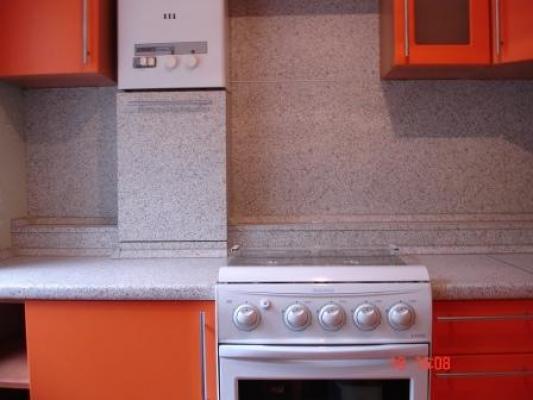
This is probably the simplest option. To do this, you need to purchase a kitchen set with floor cabinets that do not have a back wall.
If you can’t find ready-made furniture of this type, you can assemble the cabinets yourself. Fortunately, this is not a problem today.
Boner in the kitchen
Very rarely, but risers do occur in the kitchen. How can you hide them? Of course, it won’t be possible to place them hidden in the wall, so this method is discarded immediately.
There are two remaining.
- In the first case, that is, using a plasterboard box, you will have to arrange a metal or wooden frame. Then carry out plating and decoration. This method has important point which concerns decoration. After all, whatever you say, the box will be the visible part (element).
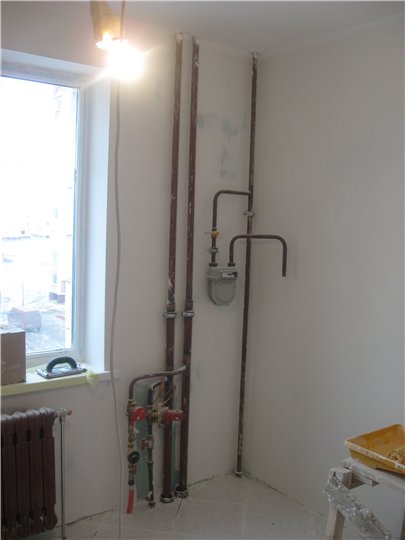
How to remove pipes in the kitchen is a difficult question
Therefore, you will have to think carefully about the design itself. In principle, the box is a kind of continuation of the wall, so the design of the wall is transferred to this design. If it is lined ceramic tiles, then the box can’t go anywhere.
- The second option is a furniture pencil case. If the urgent question is how to hide a pipe in the kitchen, then this method will be the most popular. That is, at the place where the riser passes, a furniture cabinet is installed the entire height of the room, which externally looks like an ordinary cabinet, but inside it there are communication systems. A meter, shut-off valves, audits and other devices and fixtures that are hidden from view by an ordinary furniture door are also installed here.
How to hide a gas pipe
The question of how to decorate a pipe in the kitchen is related to the gas main. Just decorate it.
Carrying it, walling it up in a wall, changing the slope, etc. with gas is prohibited. Only obtaining permission from the city's gas sector and creating a project will give you the opportunity to do something (and this is not a fact yet).
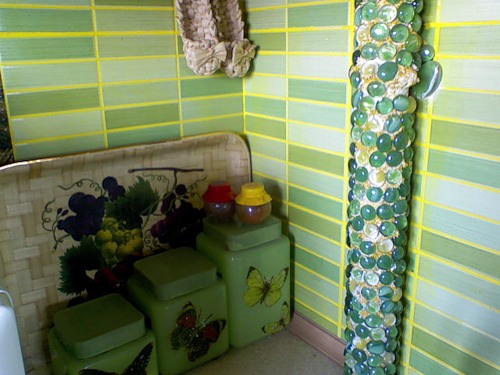
Therefore, you need to approach this issue with imagination. The first thing that comes to mind is the same pencil case or cabinets (wall-mounted and floor-mounted).
The furniture is simply installed in such a way that the gas pipe passes through it, remaining inside behind the doors. Simple, convenient, cheap.
The second way is full decoration. Here the question of how to close a pipe in the kitchen is inappropriate.
There are plenty of decor options. Only limiting your imagination can somehow stop the choice of options.
For example, you can simply paint it White color and apply black strokes, thereby making a birch trunk. And a few green leaves will give the theme a believable look. Can be painted bronze or silver.
Note! Designers suggest fitting the pipe into the overall design theme of the entire room.
If the basis was taken country style, birch will definitely fit the theme. If a techno style was chosen, then the vertical metallic unpainted look will also fit exactly into it. And there are a huge number of such options corresponding to style directions.
The kitchen is often the main place in the house where people spend most of their time - cooking, eating, meeting and socializing. That is why, when renovating it, you want to get the perfect result, create coziness and comfort.
Therefore, it is important at this stage to think through the entire ergonomics of the space. If making a sufficient number of sockets is not a problem, then the communications available in the kitchen in the form various pipes create a number of problems during repairs.
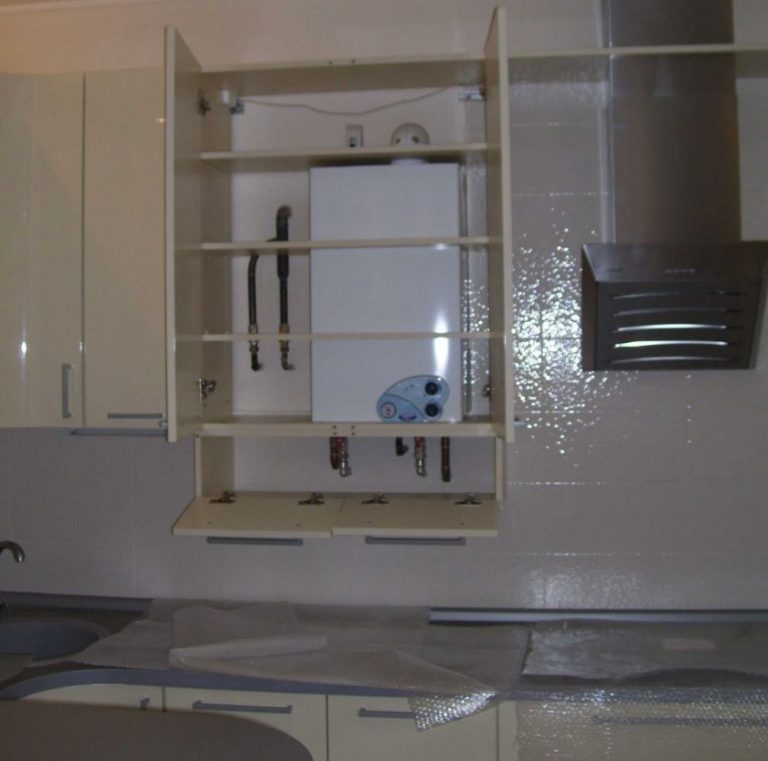
If plumbing or sewer pipes can be moved, hidden under a screed or in a wall, or hidden behind a curtain in the case of a heating pipe, but in most cases this will not work with a gas pipe.

According to existing standards, it is strictly forbidden to close a gas pipe “tightly.” Free access to it must be provided, otherwise during inspection you will be fined and forced to break the structures covering the pipe.
You cannot shorten the gas pipe in the kitchen yourself; you cannot move it to another place - approval and permission from gas services is required.
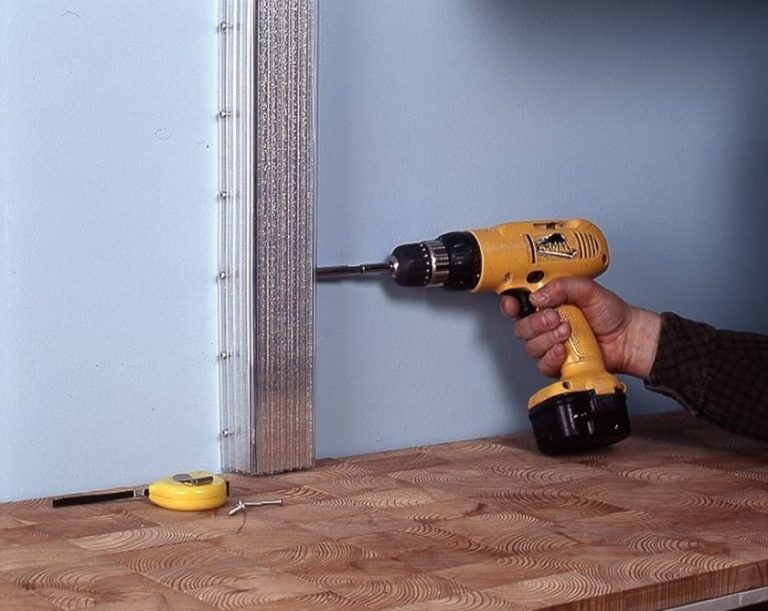
And in some cases this is simply not possible, for example, if the pipe runs throughout almost the entire kitchen area. But even if all the necessary permits for changes have been obtained, it will still not be possible to completely cut off the gas pipe in the kitchen.
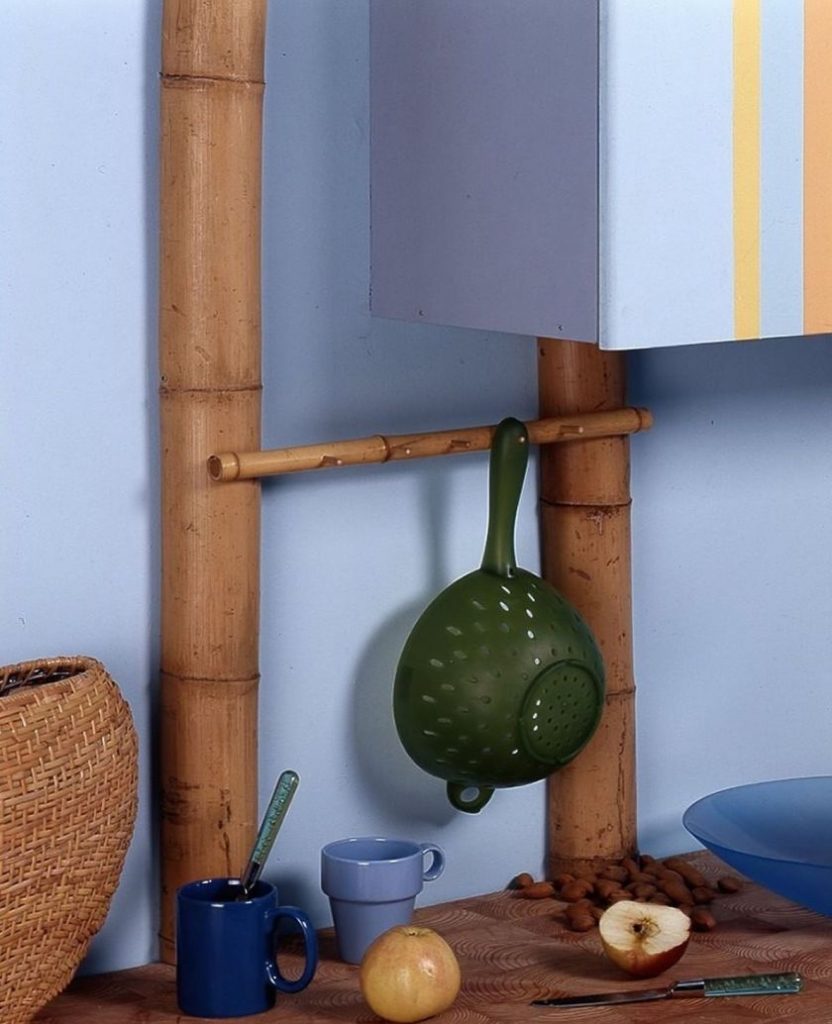
This begs the question, what to do in this case, what to do so that the pipe does not spoil the appearance of the kitchen. Don't despair. There are a lot of options for hiding a gas pipe in the kitchen. Moreover, most of them will not require large expenses. Let's look at the main ones.
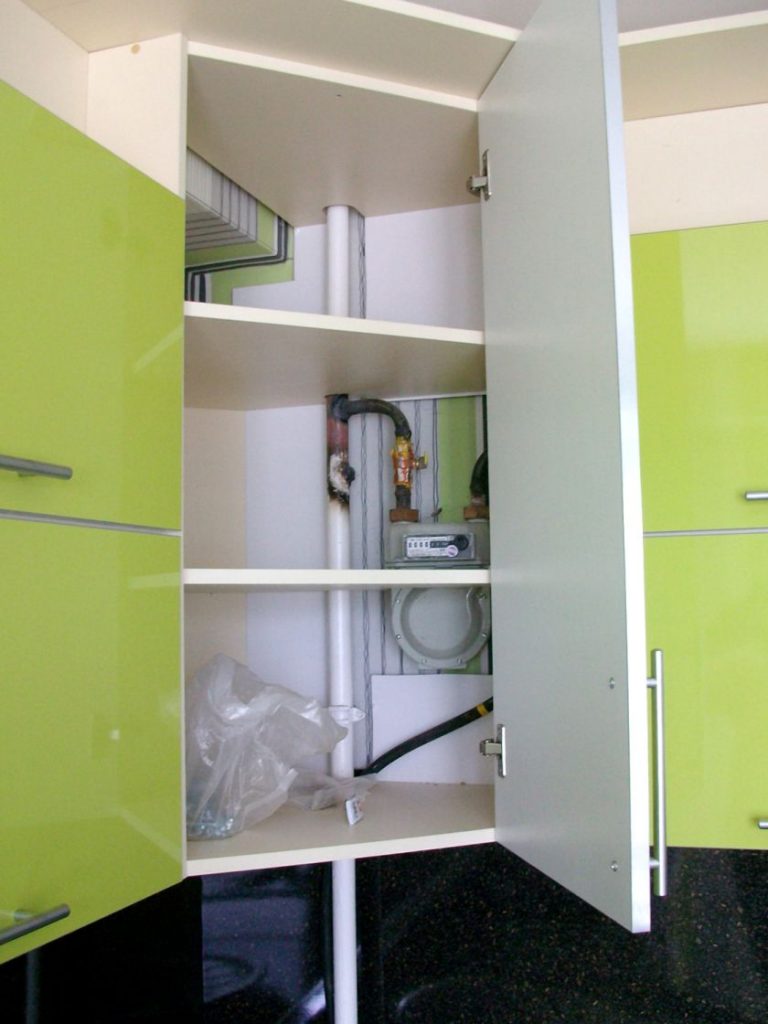
The easiest and cheapest way to hide a pipe in existing interior is decoration. You can do it yourself, or use the services of a decorator. Used for decoration available materials, and the result will impress you.
Note! Table for a small kitchen - modern and functional design(88 photos)
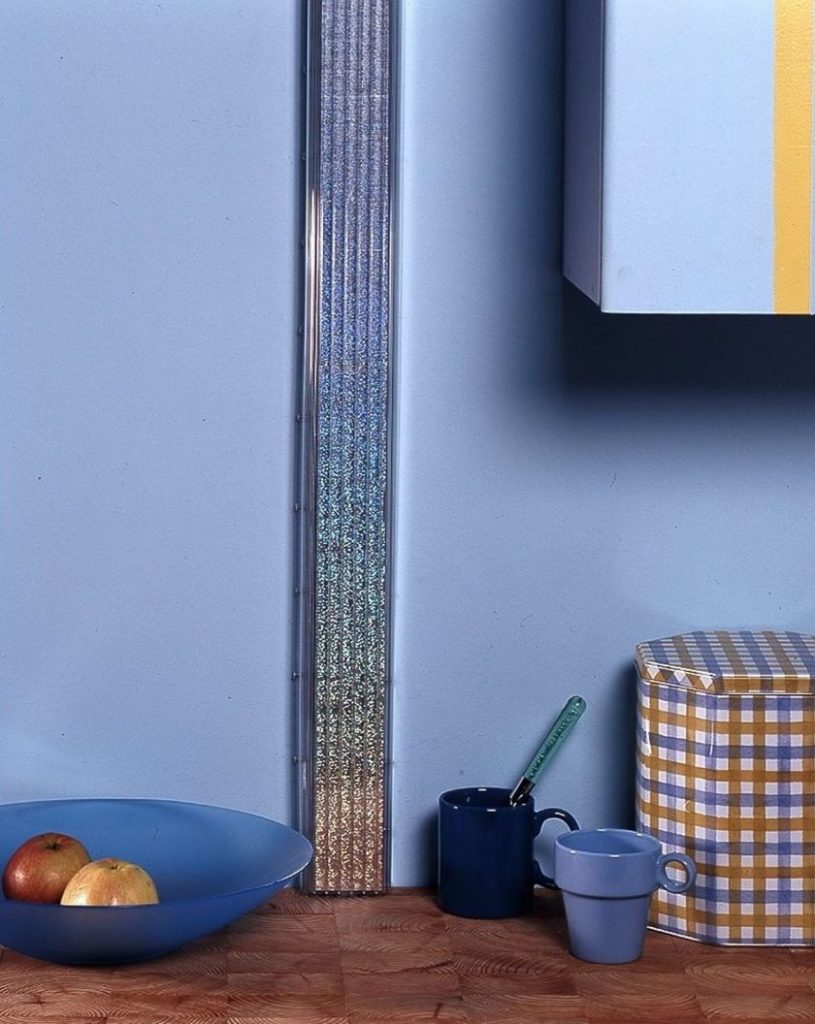
How to decorate a gas pipe in the kitchen?
With paint
One of the simplest and most inexpensive ways is painting gas pipe in the color of the walls, or vice versa, in a bright contrasting color.
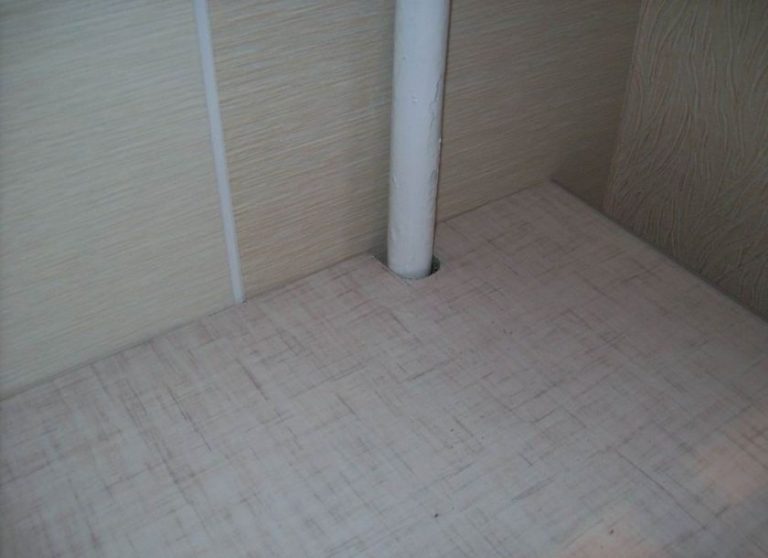
To ensure an ideal result, use paints designed for painting pipes, which, in addition to the aesthetic component, protect metal pipes from corrosion.
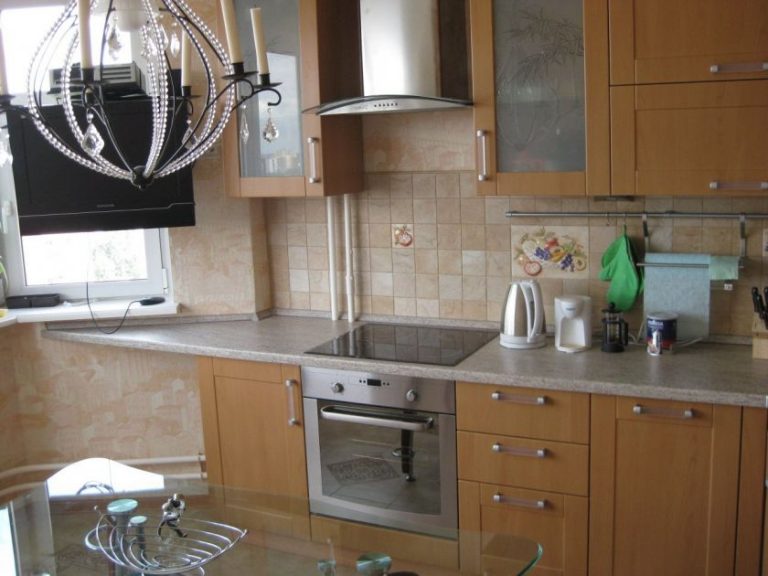
Using decoupage
Decorate the gas pipe by transferring a pattern or ornament onto it from a special film or ordinary napkins, cutting out a fragment you like (see photo of a gas pipe in the kitchen), and then cover it with glue and varnish to preserve the image and create a visual effect.

Don't forget to clean and degrease the pipe first.
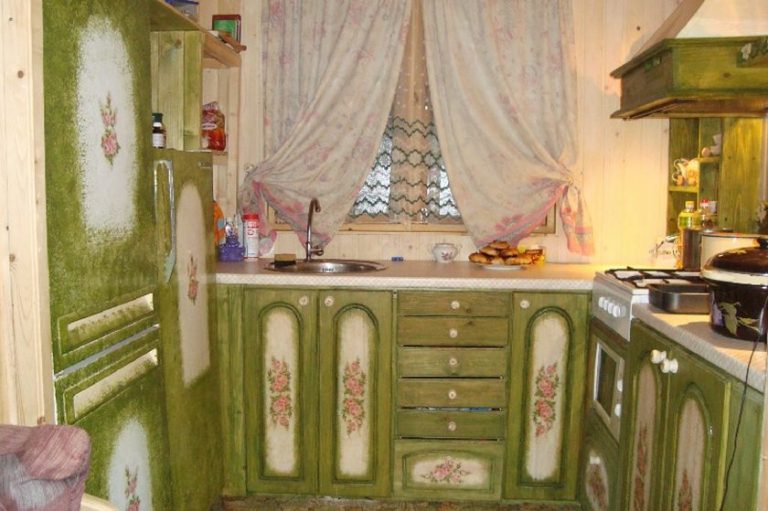
Paint the pipe with patterns
To give appearance pipes of individuality, apply a pattern or ornament on it using stencils or dot painting patterns, which can be continued on interior items, furniture, and walls.
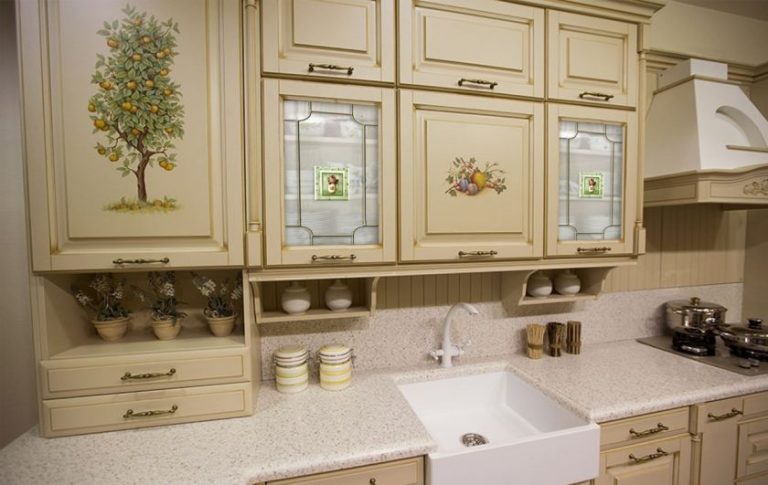
There are many options for patterns - these include Khokhloma and exotic Indian patterns, or simple geometric figures. The choice is limited only by your imagination and desire.

Use textiles, cords, twines
Using a rope or rope, wrap the gas pipe after covering it with glue.

For beauty, you can weave or glue various elements decor - plastic flowers or leaves, rhinestones and beads, shells brought from the sea. This method Suitable for interiors in country or eco-style.
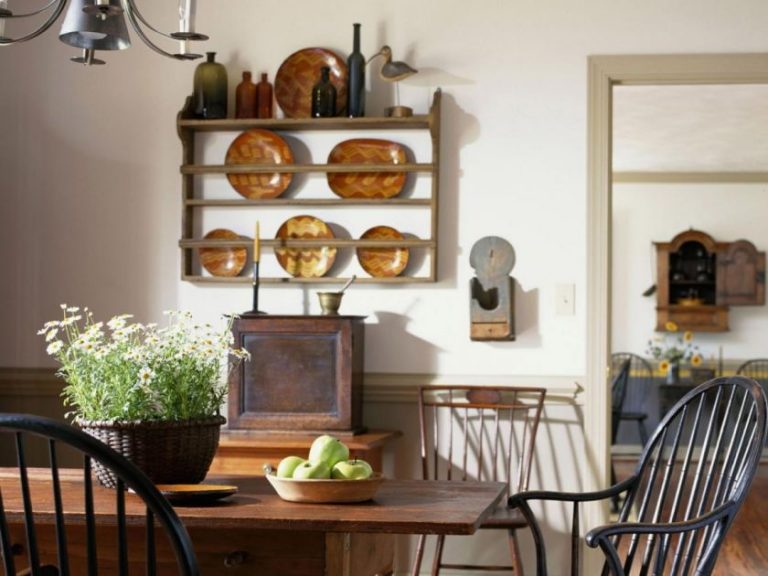
Another natural material is bamboo. Here's how to hide a gas pipe using it. Select a bamboo stick with an inner diameter slightly larger than the diameter of the gas pipe, cut it lengthwise and wrap it around the gas pipe. The result will impress you.
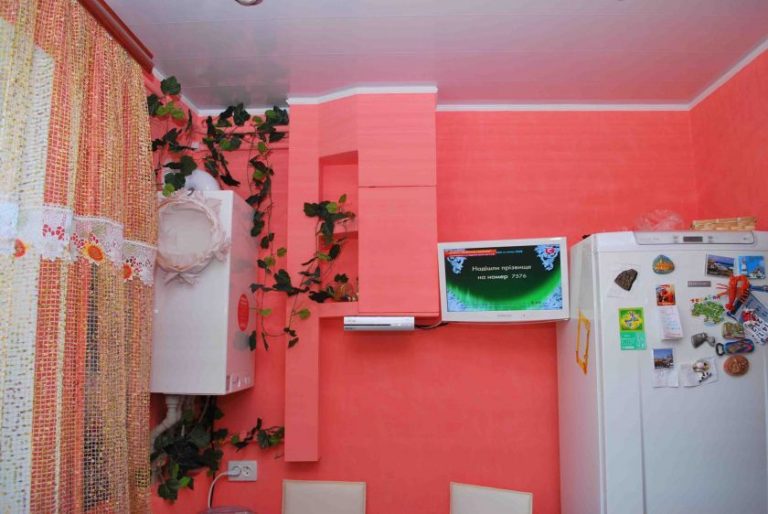
Use a gas pipe or hose as part of a railing system
This option is suitable for you if the gas pipe runs along the entire work surface kitchen, but it is impossible to hide it inside a cabinet or cover it with a false panel. In this case, paint the pipe with chrome paint.

And above or below it, attach rails on which you will hang hooks for kitchen utensils and light shelves. However, it is prohibited to hang them on the gas pipe itself.
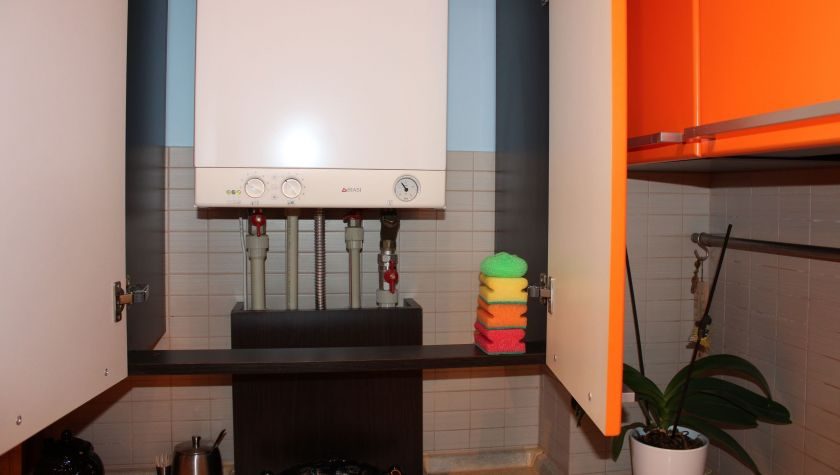
One of effective ways remove the gas pipe from view so that it does not spoil the interior - cover it with kitchen cabinets.
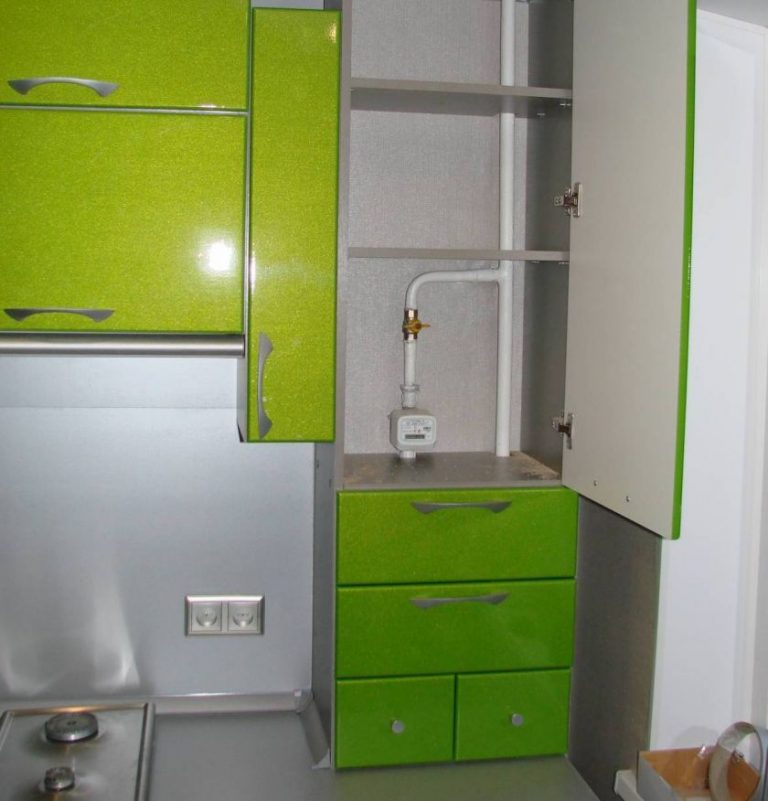
There are several secrets on how to close a gas pipe in the kitchen using kitchen furniture.
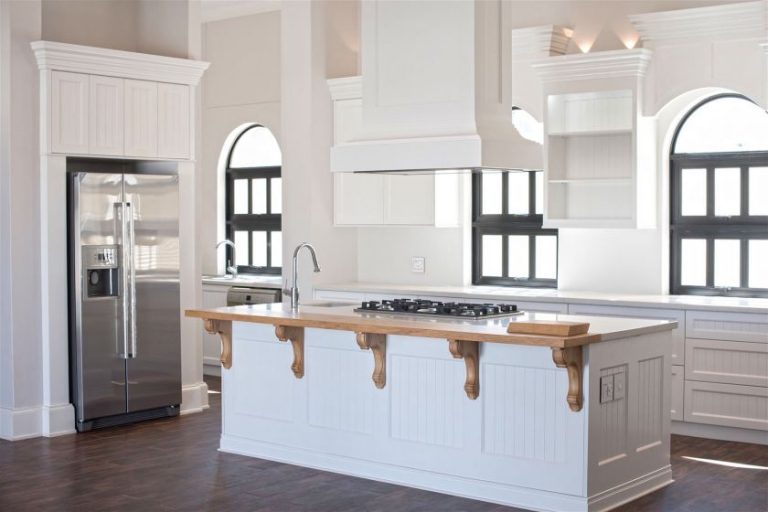
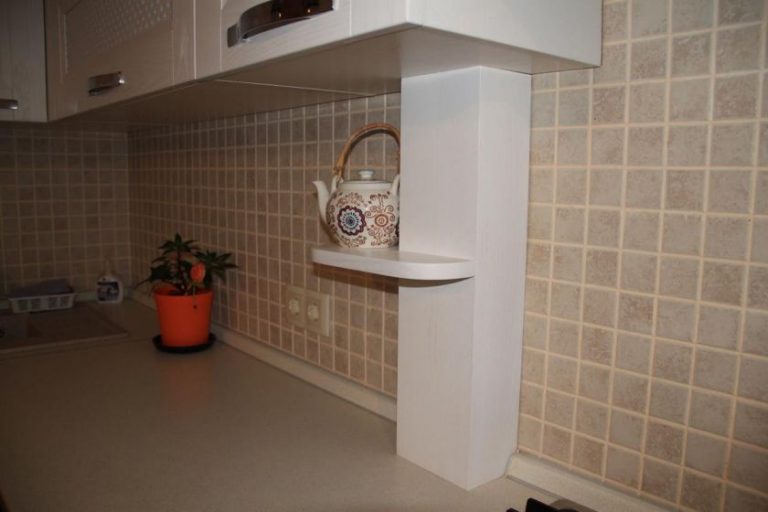
When designing kitchen set it is necessary to provide in advance the necessary niches and slots for the gas pipe; cabinets in which gas pipes are hidden should not have rear walls.
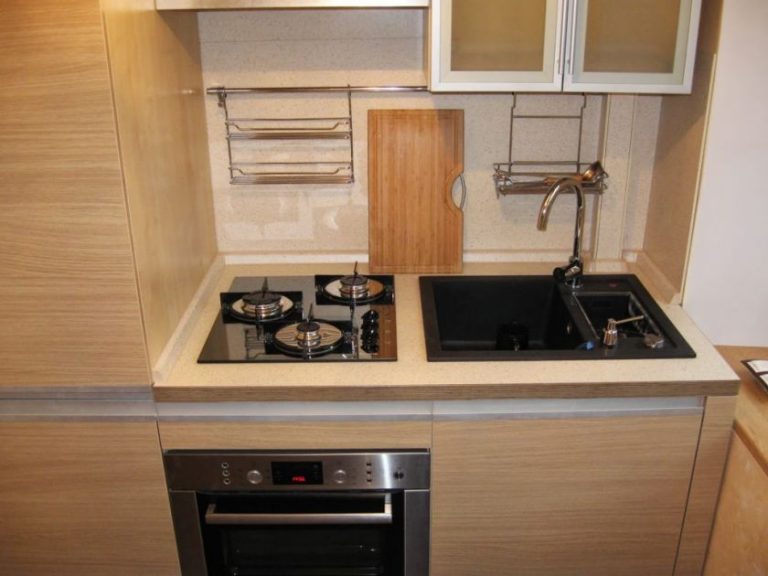
If a gas meter is placed in them, provide sufficient space for it and do not block it with shelves or kitchen utensils when placing gas boiler provide for the possibility of installing an effective ventilation system.
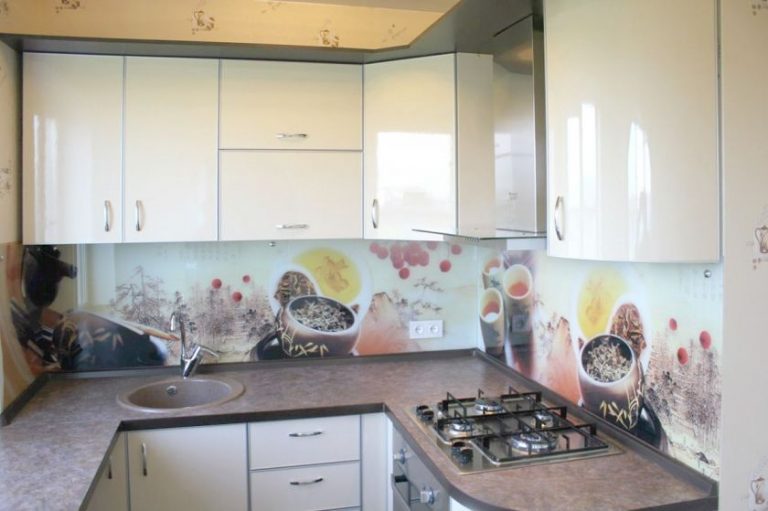
Do not pinch the gas pipe either from above or below, and do not hang interior items on it. In cabinets through which a gas pipe passes, use solid doors, since the pipe will be visible through the transparent doors. The main condition is to ensure free access for servicing gas equipment.

Most the hard way without the use of moving the gas pipe in the kitchen - hiding it using false panels or a decorative collapsible box. This option allows you to hide elements of gas equipment, while maintaining free access to it, as required by safety regulations.

Using drywall
The easiest way to make a collapsible box is using plasterboard, which is the most versatile and convenient material for installation and subsequent finishing.
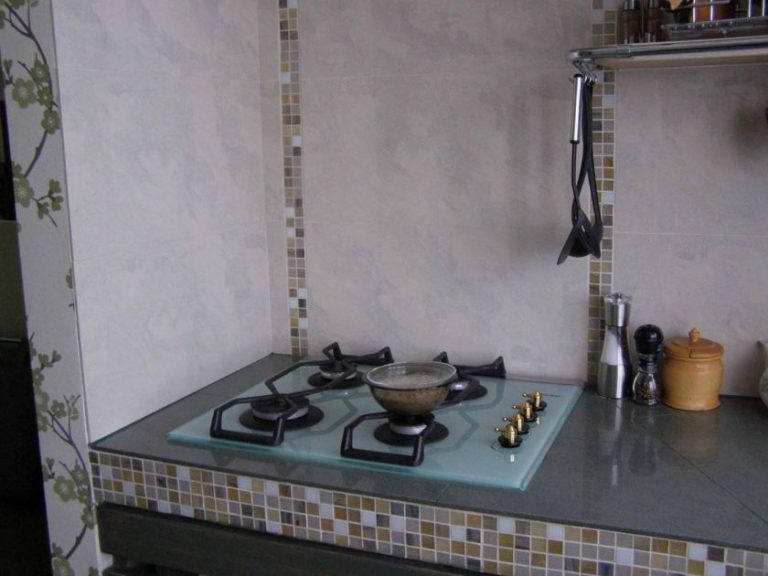
The principles of working with it are simple and known to any master; if desired, these works can be done independently. The main point is that the box should not look bulky and have an easily dismantled or removable part for access to the pipe at any time.
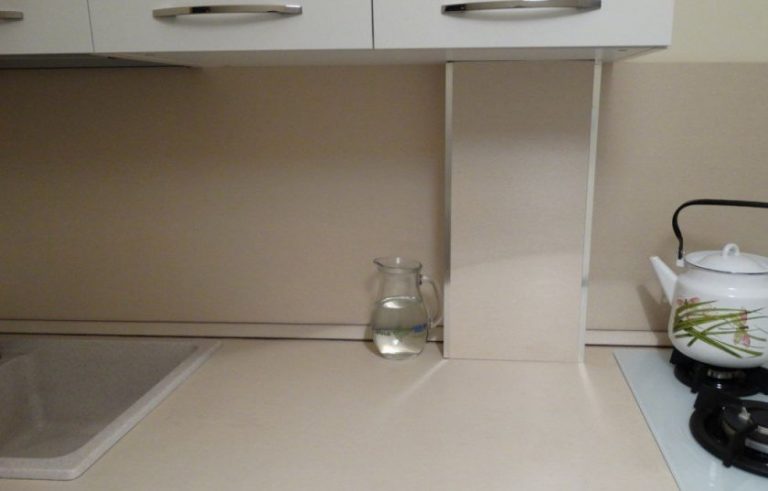
Instead of drywall, you can use laminated chipboard, plywood or wall panels to make false panels.
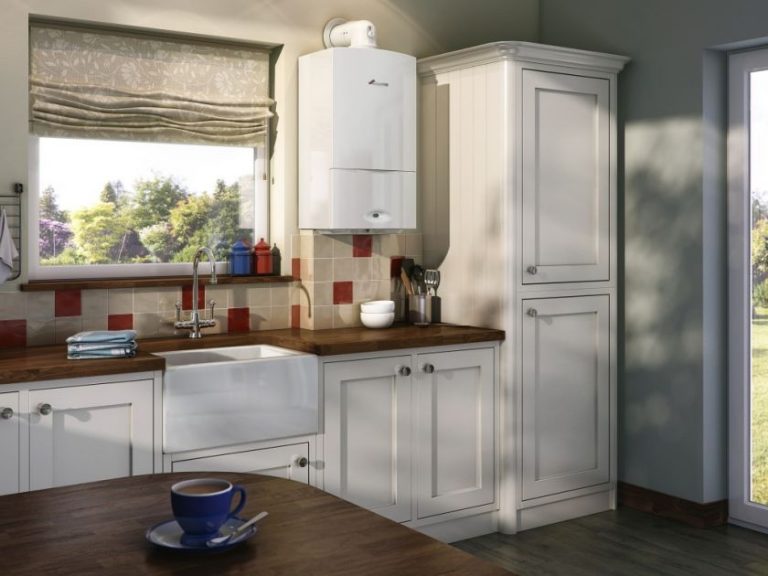
The main thing to remember is gas equipment carries an increased danger and use the above methods with caution and taking into account the accessibility requirements for it.
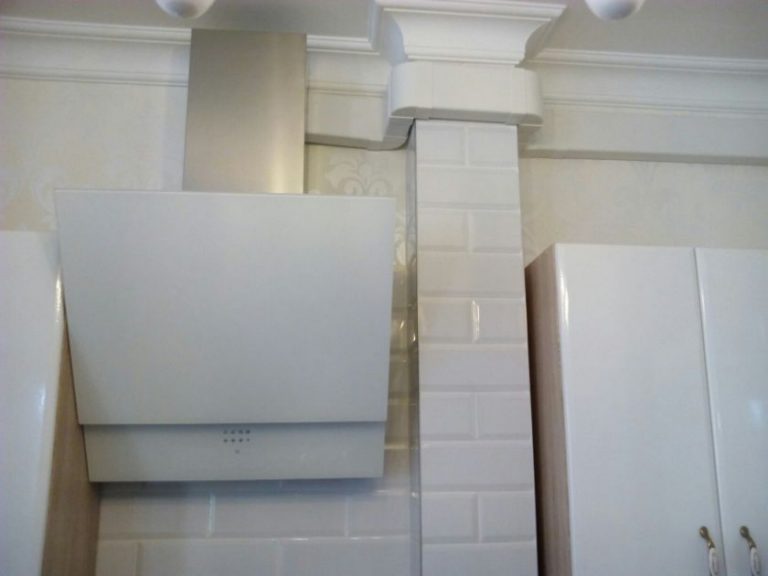
Photo of the design of a gas pipe in the kitchen
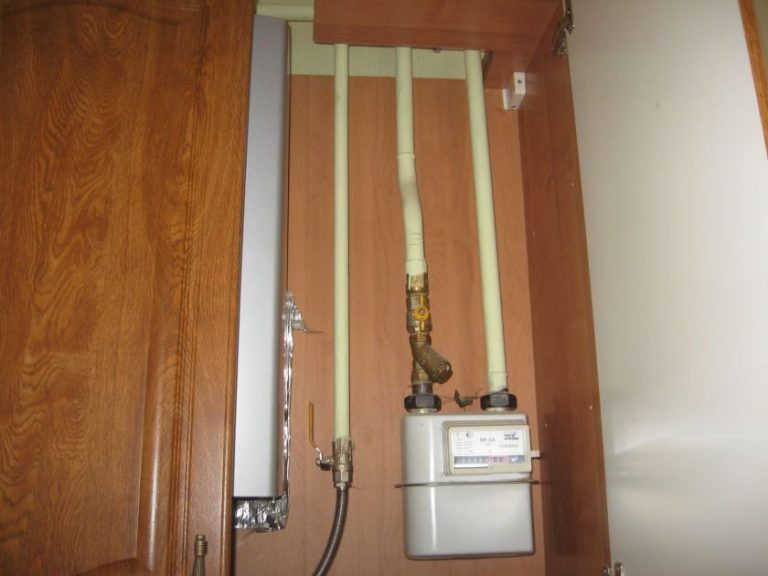
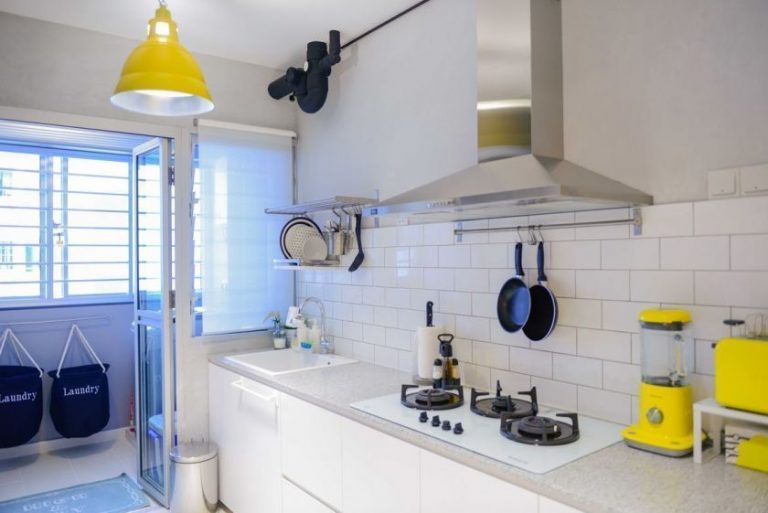
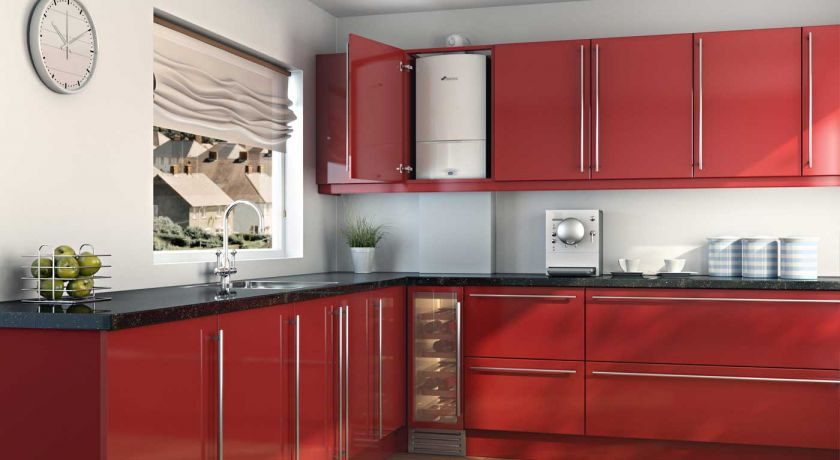
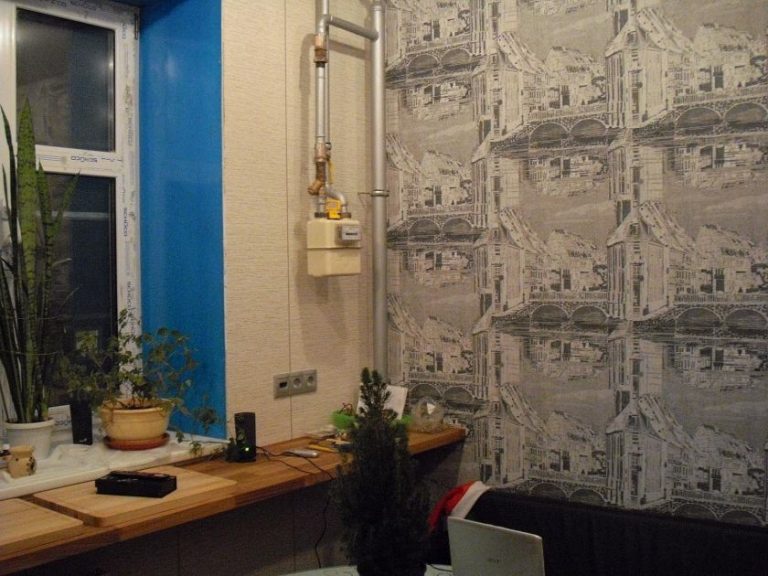
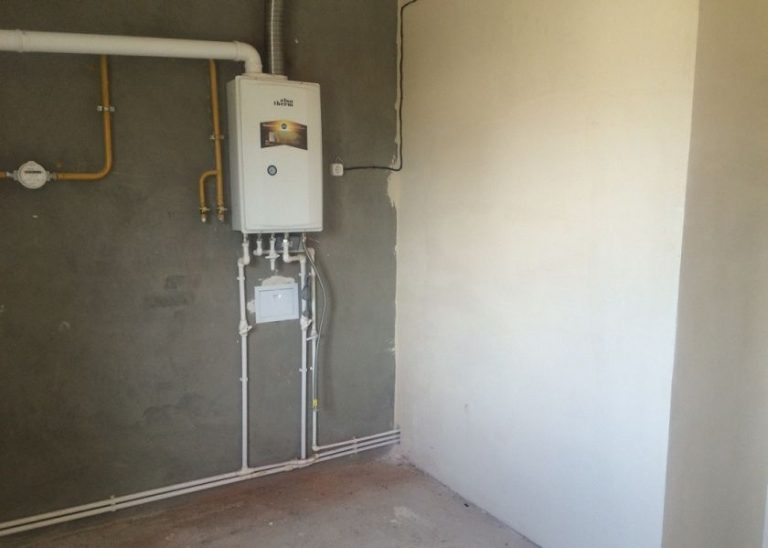
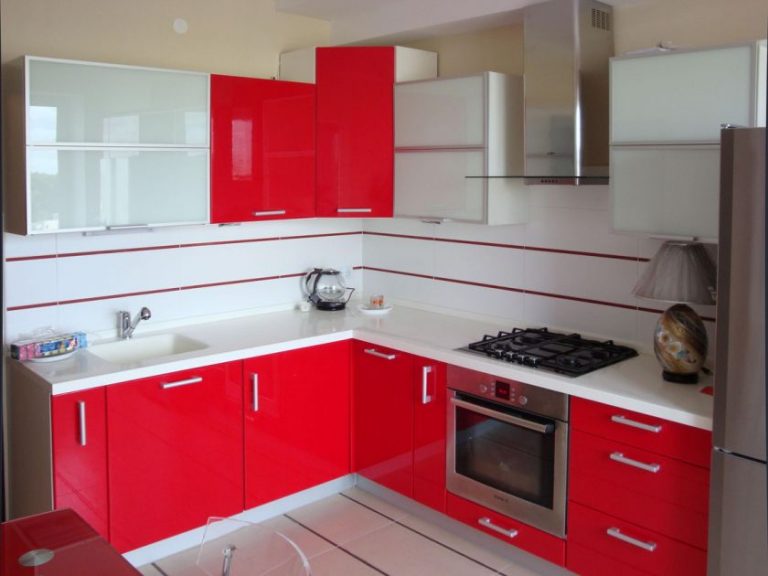
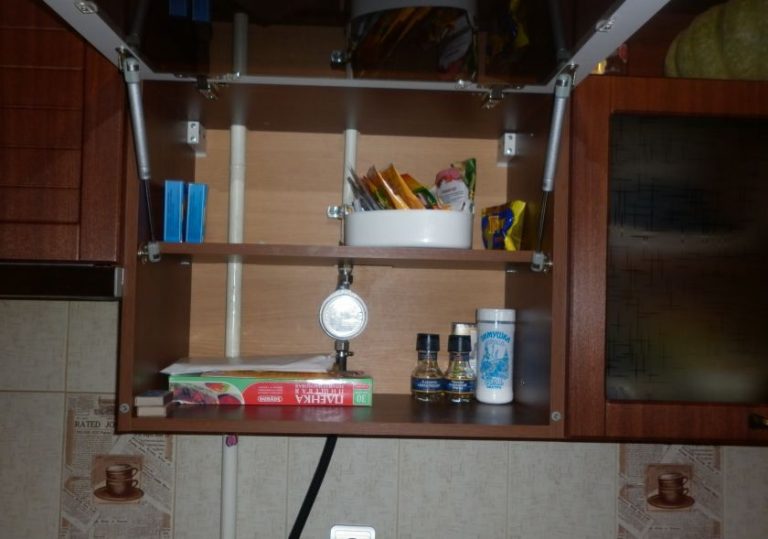
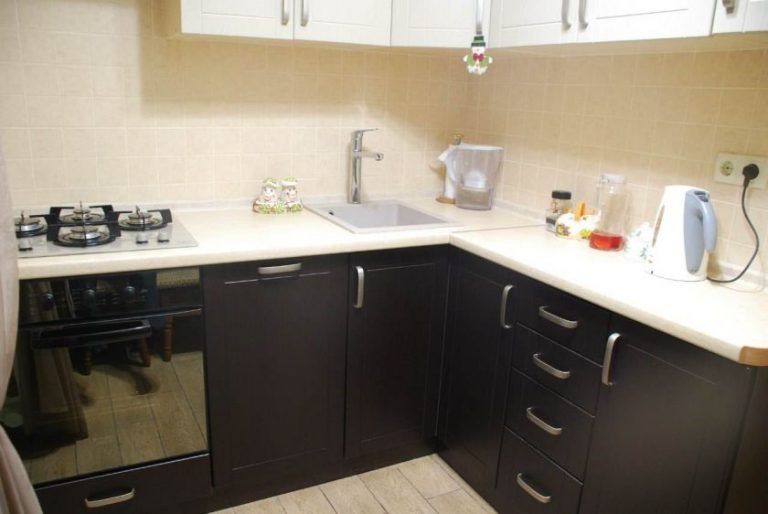
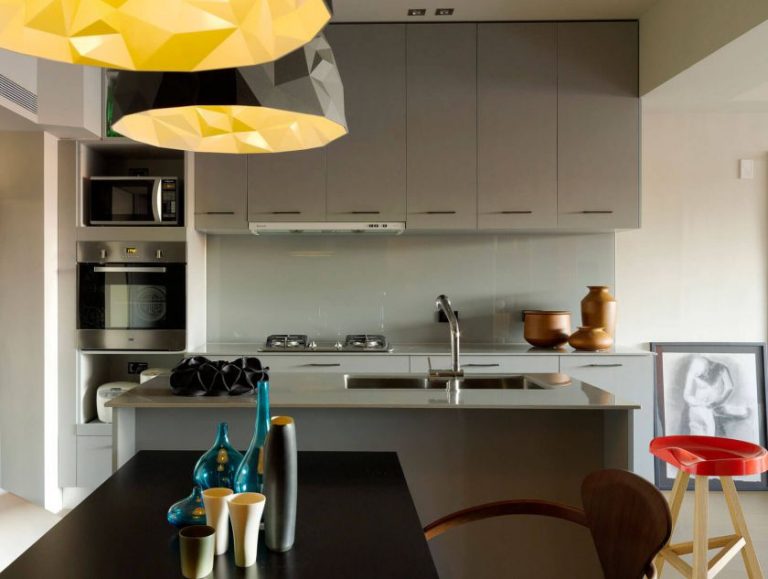
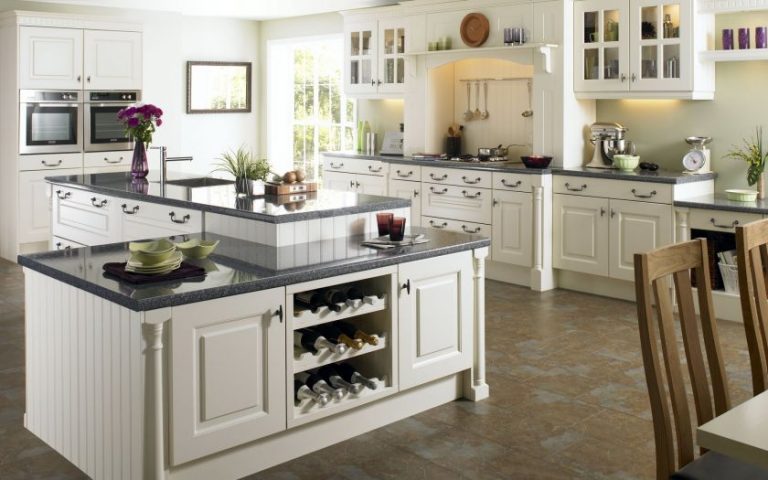

Specialization: facade finishing, interior decoration, construction of cottages, garages. Experience of an amateur gardener and gardener. We also have experience in repairing cars and motorcycles. Hobbies: playing the guitar and many other things that I don’t have time for :)
Any pipeline with its appearance usually spoils the interior design, so many people wonder how to hide communication systems in the kitchen. There are several ways to solve this problem, and the choice depends primarily on the type of pipeline. Therefore, below we will consider in detail all the ways to hide pipes in the kitchen.
Hiding the pipes
As mentioned above, the kitchen contains the largest number of communications at home, these are:
- cold and hot water supply;
- gas pipeline;
- heating pipes;
- sewerage
- air ducts and chimneys.
If all these communications are hidden, the interior will be much more harmonious and attractive, even if it is quite simple and “inexpensive”.
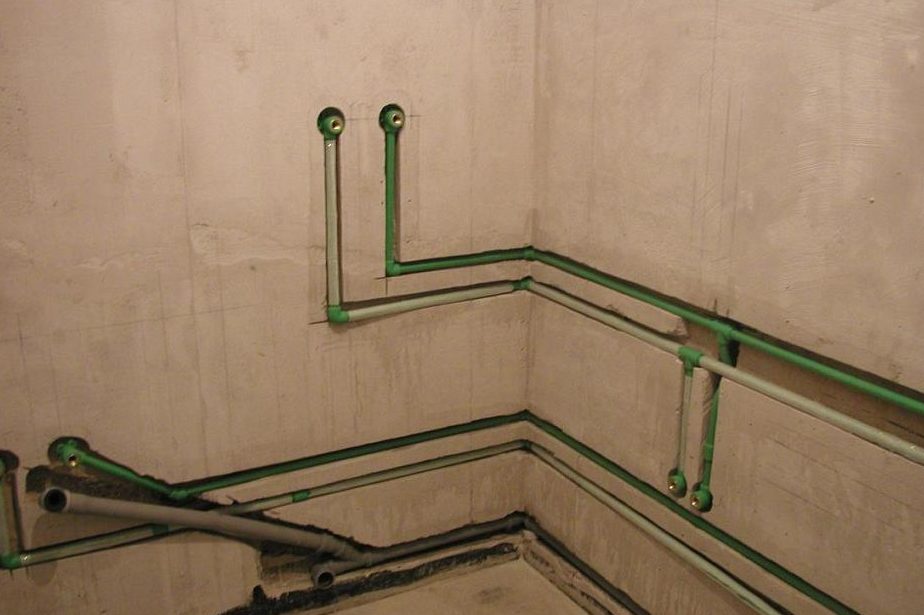
Water supply and heating pipes
First of all, let's look at how to hide water supply and heating pipes. Most often for these purposes they perform hidden installation. Its essence lies in laying pipes in wall channels (grooves).
It must be said that this method is quite complex and time-consuming. Moreover, it is carried out during the renovation of the premises. However, in general, every home craftsman can implement such a solution with his own hands; to do this, you just need to have a hammer drill with a chisel attachment, and, of course, the ability to assemble a water supply system.
So, hidden installation is performed as follows:
- first of all, you need to dismantle the old pipeline;
- then you need to apply wiring markings to the walls;
- Then, following the markings, grooves are made using a hammer drill. They must be of such depth and width that, in addition to the pipes, they can accommodate thermal insulation, as well as cement mortar, with which the channels will be sealed;
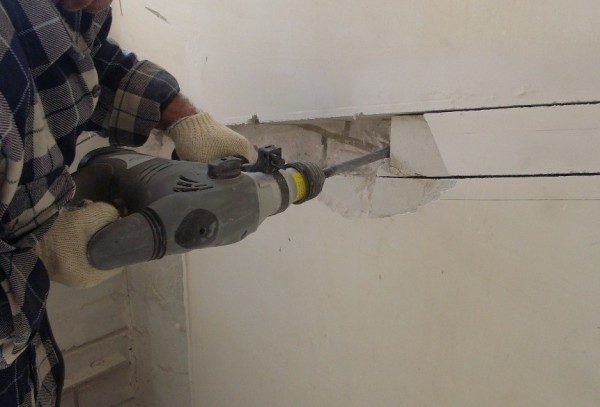
- When the grooves are ready, they must be cleaned of dust and pipes must be laid in them. To fix the latter, you can use staples and brackets;
- After assembling the pipeline, its functionality must be checked. This allows you to promptly eliminate the leak if there are assembly defects;
- then heat-insulating covers are put on the pipes;
- At the end of the work, the grooves are sealed with cement mortar.
I must say that hidden installation contains a number of rules that must be followed:
- Only new pipelines can be laid in grooves. Therefore, do not try to wall up old pipes;
- if the pipeline is plastic and is intended for hot water supply or heating, compensators must be provided. For example, thermal expansion polypropylene pipeline can reach 5 mm per linear meter;
- All detachable fittings must remain freely accessible.
Using the same principle, you can hide sewer pipes. The only thing that makes this more difficult is that the grooves for them must be very wide and deep.

In the photo - laying heating pipes on the floor
Heating pipes
Enough A common option for hiding heating pipes is their location in the floor. If the floor is wooden, then the pipeline is laid between the joists.
If a home is being renovated and a concrete floor is poured, the pipes are laid directly into the screed. The only thing is that you first need to pressure test the system, i.e. make sure it works.
As with bricking into a wall, pipes in the floor must be insulated so that energy is not wasted on heating the screed. For beautiful design holes in the floor through which pipes exit, special covers should be used.
If the screed has already been poured, you can make grooves in it, as in the wall, then lay the pipeline in them and seal the channels with cement.

Gas pipeline and other types of pipelines
Many people are interested in whether it is possible to hide a gas pipe in the kitchen? Changing its location, walling it up in a wall, or performing any other actions with the pipe is prohibited. However, this does not mean that the gas pipeline cannot be hidden.
There are several ways to solve the problem:
- box installation;
- installation of cabinets;
- decoration.
The most common way to hide a gas pipeline, as well as other communications, from heating lines to air ducts and chimneys, is to install a plasterboard box around them.

To set it up you will need the following materials:
- metal profiles for drywall;
- the drywall itself;
- putty and self-adhesive mesh.
It must be said that the box can be sheathed with other materials, for example, chipboard plywood or plastic, however, it is easier to work with plasterboard.
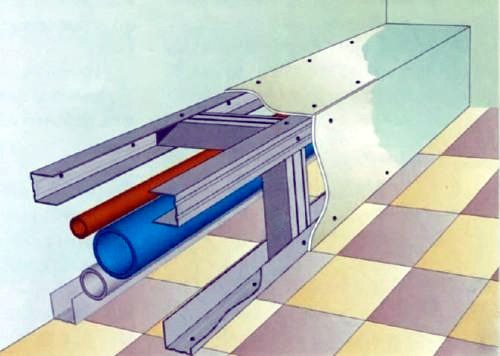
The box installation instructions are as follows:
- First of all, you need to assemble a box from metal profile. If you are going to hide the riser, then the structure is based on racks that are connected by jumpers, while guides are mounted on the floor and ceiling. For horizontal wiring the same frame is used, but located horizontally, while two guide profiles are attached to the floor as shown in the diagram above.
To fix the profiles to the wall, use dowel nails. The most important thing at the stage of assembling the frame is to correctly position the racks so that they are parallel to each other, and the box itself is perpendicular to the wall and floor; - then the frame is covered with plasterboard using self-tapping screws;
- to complete the work, you need to cut the chamfers from the edges of the drywall, stick a reinforcing mesh on them and then fill the surface. On our portal you can find detailed information about puttying drywall.
A simple way to hide the pipe from the hood in the kitchen is to place it on the wall, above the wall cabinets.
This option is suitable for plastic rectangular air ducts.

The simplest and quick way hide communications - purchase cabinets with missing back walls. Behind them there may be water supply and sewerage. In places where the pipeline extends beyond the pipes, you can also make curbs located between the countertop and the wall.
Is it true, this option is also the most expensive, since you have to order new furniture, the price of which is very high. The only thing to save money is to make small cabinets yourself, as, for example, in the photo. To do this, you should use laminated MDF or chipboard.
The design of the cabinet itself is extremely simple - it consists of two sides and a front door. This solution is convenient because it provides easy access to ball valves and other fittings.
There is another one, much more cheap way How to hide a gas pipe or, for example, a heating riser in the kitchen is to decorate it. Since this approach is creative, you will have to use your imagination a little, but the result may exceed all expectations.
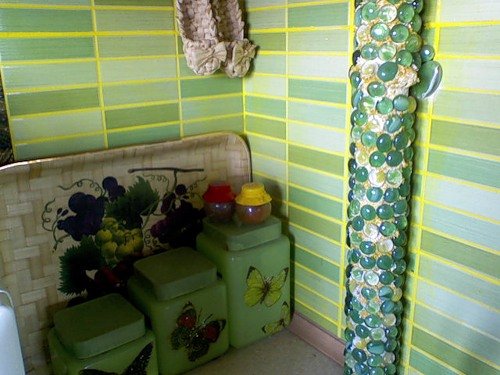
As an example, I will give several simple options decoration:
- if you need to hide the riser, you can paint it white and apply black strokes in places, thereby imitating a birch trunk;
- the pipe can be wrapped with jute rope and further decorated to your liking, for example, hang flower baskets on it or string an artificial climbing stem of a plant along it;
- To decorate thin pipes, you can use bamboo, split into two parts. It is put on like a casing and secured with a rope;
- Often an image is painted on the walls, and the pipe itself adjacent to the wall is also painted. In this case, it becomes completely invisible.
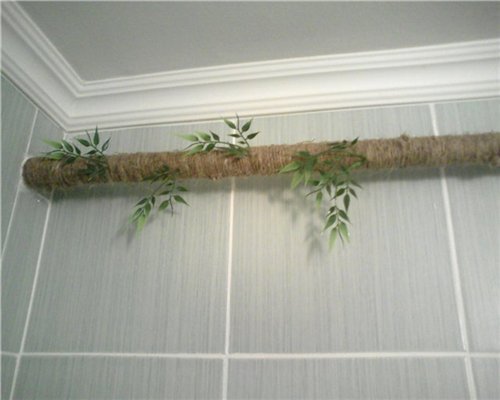
You can come up with other decorating options that will go well with your kitchen interior, or take the voiced idea as a basis and remake it in your own way. The main thing is that the pipe eventually becomes invisible, and at the same time the interior looks beautiful and harmonious.
These are, perhaps, all the most successful, in my opinion, ways to hide communications in the kitchen.
Conclusion
There are several ways to hide pipes in the kitchen. Some of them are quite complex and require repairs, while others are extremely simple and do not require financial costs. Therefore, you should choose based on your own preferences and, as mentioned above, the characteristics of the pipeline.
See the video in this article for more information. If you have questions after reading the material, leave them in the comments and I will be happy to answer you.
There are always a lot of communications in the kitchen, in particular pipes, which does not please the owners. They look unattractive and interfere with the arrangement of furniture and equipment. But you can correct the situation by using your imagination or using our tips that will help you hide or skillfully decorate pipes in the kitchen.
Water pipes and sewerage
In the kitchen we deal with water, sewer, and gas pipes. In the first case, the work will not take you much time: put a special sleeve on the sewer pipeline, then wrap it plastic film(make several layers), install in the area where water pipes, bottom sink box. Remember that you cannot wall up such pipes, as this will complicate repairs later! Now let's move on to the gas pipes.
Gas pipes
There are more inconveniences associated with gas pipes, and their camouflage is a more complex procedure. It is important to understand that the pipeline cannot be tightly closed, as this is very dangerous in terms of gas leakage.
Drywall box
This method is a classic of its kind, which will help close pipes not only in the kitchen, but also in the bathroom. The procedure for arranging the box is as follows:
- Prepare moisture resistant drywall, profile for the frame (3 pcs.), screwdriver, metal scissors and screws, as well as polyurethane foam.
- Calculate the dimensions that the future box will have, not forgetting about providing access to the pipes.
- Then we install the profile in a vertical position.
- At the next stage, cut out blanks from plasterboard, having previously drawn them on sheets. To do this, use scissors for working with metal.
- Cover the frame with plasterboard, securing the blanks to the profile with self-tapping screws.
- If any unevenness or cracks appear between the wall and the box, blow them out polyurethane foam, subsequently removing excess.
- The front side of the box must be lined finishing material, for example, ceramic tiles. The structure can also be painted, not forgetting to putty the surface before doing so.
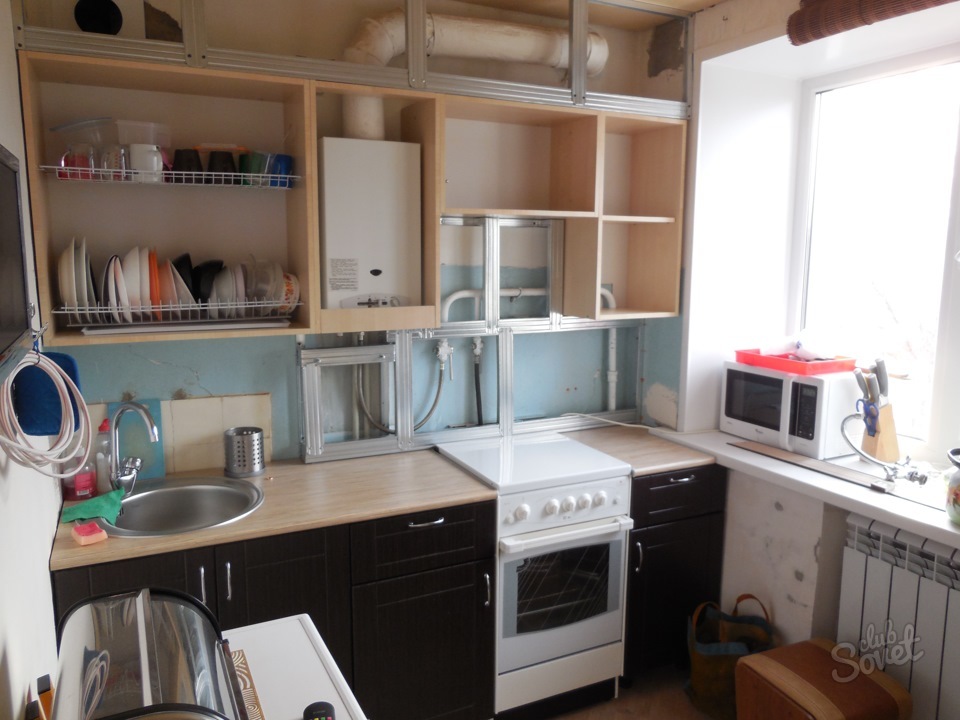
Wall cabinets
IN in this case furniture without back walls is used. Vertical pipes can be closed by installing a pencil case, and when masking horizontal ones, hang the kitchen cabinet so that the pipes are located along its shelves. Such headsets are also great for hiding unsightly counters. Please note: under no circumstances should you attach wall cabinets to gas pipes and do not place a gas water heater in the cabinet!
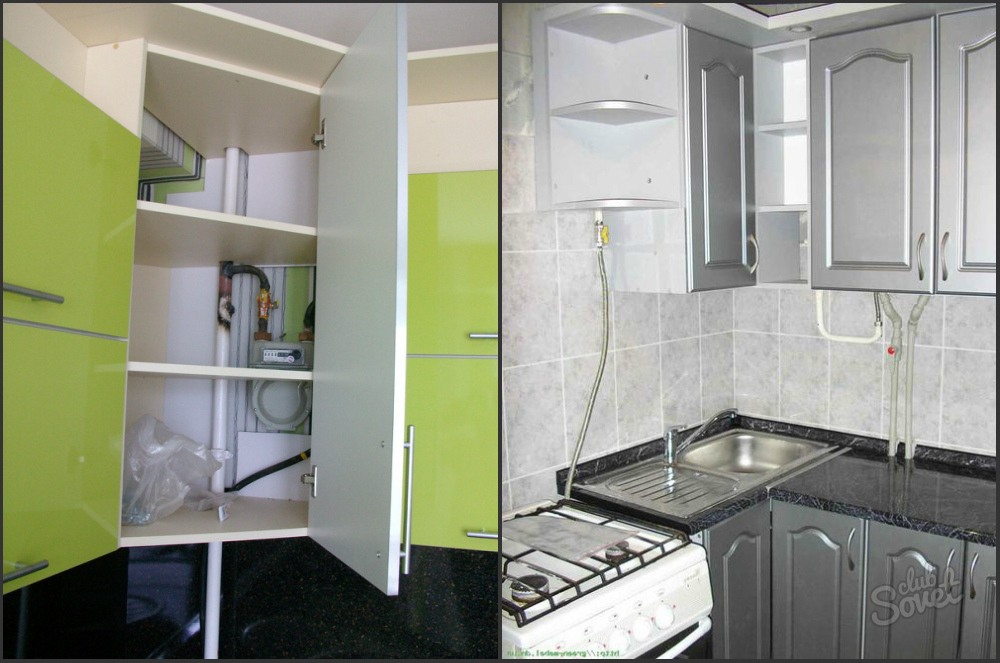
Railings
If the pipe runs along the entire wall, in the “apron” area, that is, between the wall cabinets and the countertop, you can make it an element of the railing system. This is special suspended structure, which is used to locate various kinds of hooks, dryers and other devices. To do this, clean the pipe so that it acquires a metallic shine, cover it with chrome paint, making several layers, attach hooks, shelves and whatever you want above it. This will create the impression that the fasteners are hanging on the pipe.
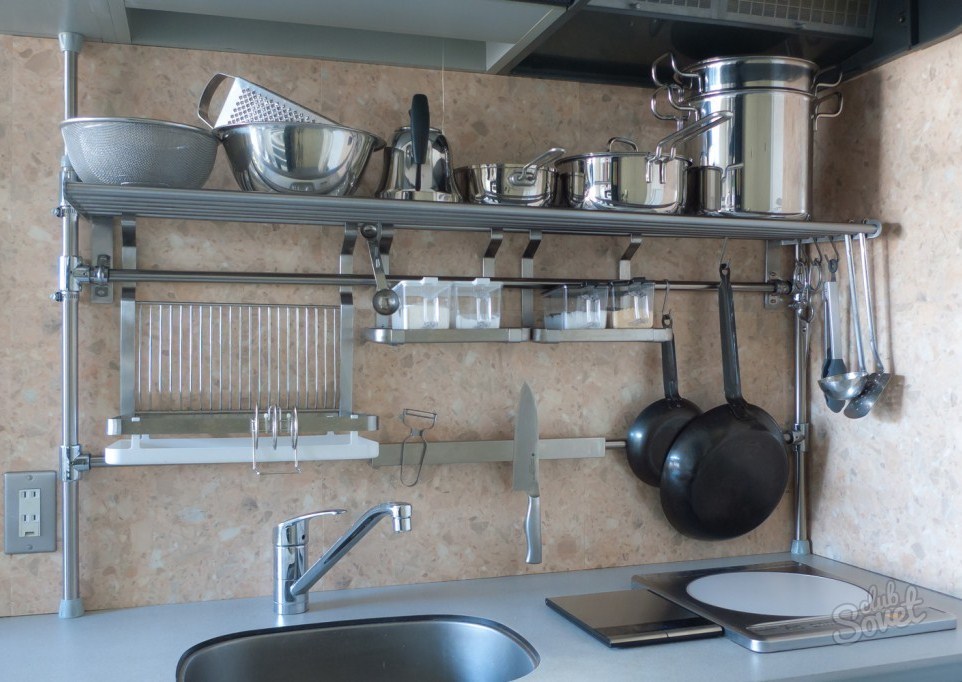
Removable table top
Often a gas pipe with a tap runs at a level of 75 cm above the floor, so the option with a removable tabletop in this case is more than appropriate. On the section of the countertop that is located above the faucet, it is necessary to make a hole and provide a special handle to which the pipe will be attached. After making a cut on the bottom of the pipe, put the valve on it. It can be covered with a handle from the countertop.
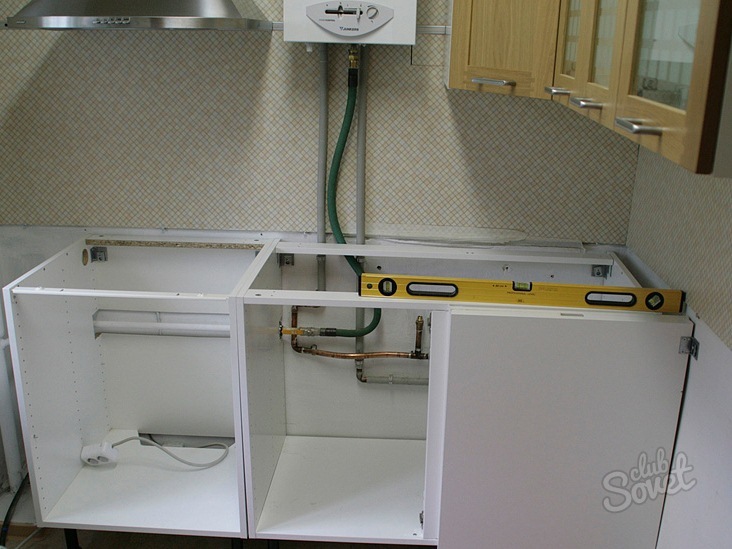
Pipe decor
If the kitchen is of modest size and it is not possible to build plasterboard box or install a wall cabinet due to lack of free space, you can simply decorate the pipe in an original way.
When decorating, you can use our tips:
- Decorate a thick pipe with an interior mosaic or paint it with some pattern, but so that it does not stand out from the general style solution kitchens. For example, you can decorate a pipe to look like a birch trunk, but you need to carefully think through the artistic composition and decoration of the walls, for example, paste them with washable wallpaper with a harmonious pattern - green leaves.
- The decoupage technique is considered interesting. To do this, prepare multi-layer napkins that have a beautiful pattern, PVA glue and varnish. Having cleaned the pipe, you must first paint it and then cover it with napkins, or rather, with them top layer with pattern. After the material has dried, the surface is varnished to achieve a beautiful shine.
- A budget option is to paint unsightly pipes to match the walls so that they do not stand out against the background of the decoration.
![]()
Heating radiators
And finally, let’s remember about disguising radiators in the kitchen. To close the radiator, it is best to install decorative screen, made of metal.
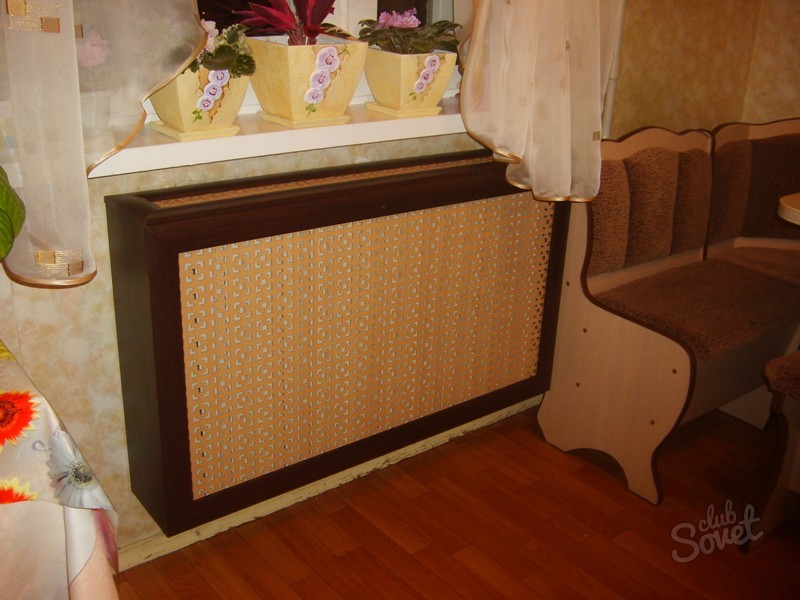
Thus, there are many options to help disguise or decorate pipes in the kitchen. It’s worth focusing on the situation.
Pipes running near kitchen walls are rarely pleasing to the eye. In an era of visual noise, the desire to make your home cozy is understandable, and a structure sticking out of the wall is no less annoying than water dripping from a tap.
To prevent the pipe in the kitchen from spoiling the view, it can be hidden in a false wall or decoratedAll communications in the house must pass through the kitchen. Here you can find pipes:
- cold and hot water supply;
- sewerage;
- gas;
- heating;
- ventilation.
Each of them has its own rules and methods of camouflage, determined by technical features.
Plumbing and sewerage: how to hide pipes in the kitchen
Building codes and regulations provide wide scope for activities to disguise these networks.
The best way to hide pipes in the kitchen is to hide them in the wall or floor.
The labor-intensive process requires skills in working with a hammer drill and installing a water supply system. To correctly lay communications in grooves, the following rules should be followed:
- there is a sewer system below and a water supply system above it;
- left hot water, on the right is cold;
- The sewer pipe is laid with a slight slope towards the collector.
The supply to the taps is masked with a special cabinet or everyone can figure it out. A regular electric jigsaw is sufficient.
If it is technically impossible to wall up the water supply, it can be done with plasterboard. So that in the kitchen, a structure is built that represents metal carcass of three guides on which drywall is attached. You can also use plastic, plywood or chipboard. Often the kitchen is finished with ceramic tiles or other materials. Technological openings are installed in the places where the valves are located. Since this finish makes it difficult for people to access repair work, before masking, it is advisable to replace the old ones with new ones. The service life of metal-plastic reaches 50 years, so there is no need to worry until next repair they will last without Maintenance. To hide sewer pipes in the kitchen, it is also advisable to take care of their long, impeccable service.
The hardest place to hide a riser is in the kitchen. We must pay tribute to the architects, this rarely happens, but sometimes after combining the kitchen and pantry, the riser can become the center of attention. You cannot move it, and the only way is to build a box around it or decorate it.
Gas networks
Relocation of gas pipes is possible only by employees of the relevant services. The very strict rules of SNiP 2.04.08 - 87 “Gas supply” are due to the explosion hazard of these works and the serious consequences of improper installation. It is much easier to hide a gas pipe in the kitchen without carrying out work to move them.
Only a gas service employee has the right to move and install gas pipes.Installation of a plasterboard box
Under no circumstances is it possible to remove the gas pipe in the kitchen into grooves. According to the “Safety Rules in the Gas Industry,” covering gas pipes with plasterboard is only possible if unobstructed access is ensured. That is, you will have to make either a removable structure or one with a tear-off wall. Otherwise, gas service workers have the right to demand that the homemade product be dismantled. And a fine may also be imposed. Mount hanging structure will not be difficult for home handyman. To cover the pipes in the kitchen with plasterboard, you must:
- cut three strips of suitable size;
- connect the strips with a metal frame;
- make hinged loops where the box adjoins the wall;
- screw hooks into the wall;
- hang the box, plaster it;
- paint or decorate with wallpaper or otherwise.
Using kitchen wall cabinets: is it possible to hide a column?
Wall cabinets, if properly planned, will completely cover the pipes in the kitchen. You can order any configuration of furniture, the main thing is to accurately calculate the location of the highway. AND extra bed for placing kitchen utensils has never been superfluous. The only disadvantage of this method is the high cost of the work. A homemade plasterboard box will cost much less than a cabinet, but it will take up more space and will not add useful space. Hiding pipes in the kitchen is easy, you just need to study all the nuances.
Railings
If you can’t remove the gas pipe in the kitchen using drywall or cabinets, you can cover it with roof rails. This device is a horizontal metal structure With decorative inserts, on which hooks and various shelves are attached. The gas line itself cannot be used as a railing; suspended shelves and hooks play the role of a distracting and masking element. To decorate a gas pipe in the kitchen with roof rails, you must first prepare it:
- sand to a metallic shine using sandpaper;
- coat with metallic paint.
When installing roof rails, it is desirable to create the illusion that the gas pipe is one with them.
Decorating a gas pipeline in the corner
There are a great many design options, and the choice of a specific one depends on the style of the room.
Fantasy will tell you original solution, the main thing in choosing is the combination of kitchen decor and piping:
- A classic kitchen in pastel colors can cover the pipes in the kitchen to imitate a column or stucco molding, or decorate it with forged items or gilding.
- Provencal style with elements of comfort and warmth, with imitation old plaster and abundance decorative elements we can hide pipes in the kitchen in scraps of fabric and colorful rags.
- Country style implies abundance natural wood. Minimum decor, maximum practicality. A gas pipe in a country-style kitchen requires minimal masking; painting it in a color close in tone to the general mood of the room is enough.
- The style is minimalism and restraint of elements. Straight lines, geometric fantasy beg element square section with chrome surface. The gas pipe is round, so a narrow box made of thin plastic coated with metallized paint or film will help to realize the idea.
- Russian style. Tree, birch trees, small bast shoes on the wall, a horseshoe above the door. The gas pipe in the kitchen will become part of the decor if you paint it with white paint and apply black horizontal stripes imitating birch bark.
- Loft style imitates non-residential premises. The decor of a gas pipe in the kitchen in this case may not be masking, but rather emphasizing its presence. Contrasting colors, symbols of the gas service, even the inscription “gas” will perfectly fit the line into a loft-style kitchen.
Heating networks in Khrushchev along the wall: don’t forget about the boiler
In most cases, they are located near the window opening and it is enough to cover the pipes in the kitchen with a curtain. If the kitchen design does not require curtains, then the heating pipe riser can be trenched into the wall. If this option does not suit you, there are simpler solutions:
- Railings. Paint with metallic paint, add decorative elements, hang hooks and shelves.
- You can hide pipes in the kitchen in a furniture cabinet. This will improve the interior of the room and create additional storage space for useful items.
- A plasterboard box will be cheaper to manufacture, but will steal space.
- An imitation of an antique column will fit into the baroque style of the room.
WATCH THE VIDEO
Ventilation: masking the hood
Placing it under the ceiling leads to the conclusion that it is best to disguise the air duct in wall cabinet. As an option, a plasterboard structure can be used. If the ceiling height allows, then the ideal way to close the pipes in the kitchen would be to install suspended ceiling. it will give the room modern look. Anyone with minimal skills and tools can hide pipes in the kitchen.






